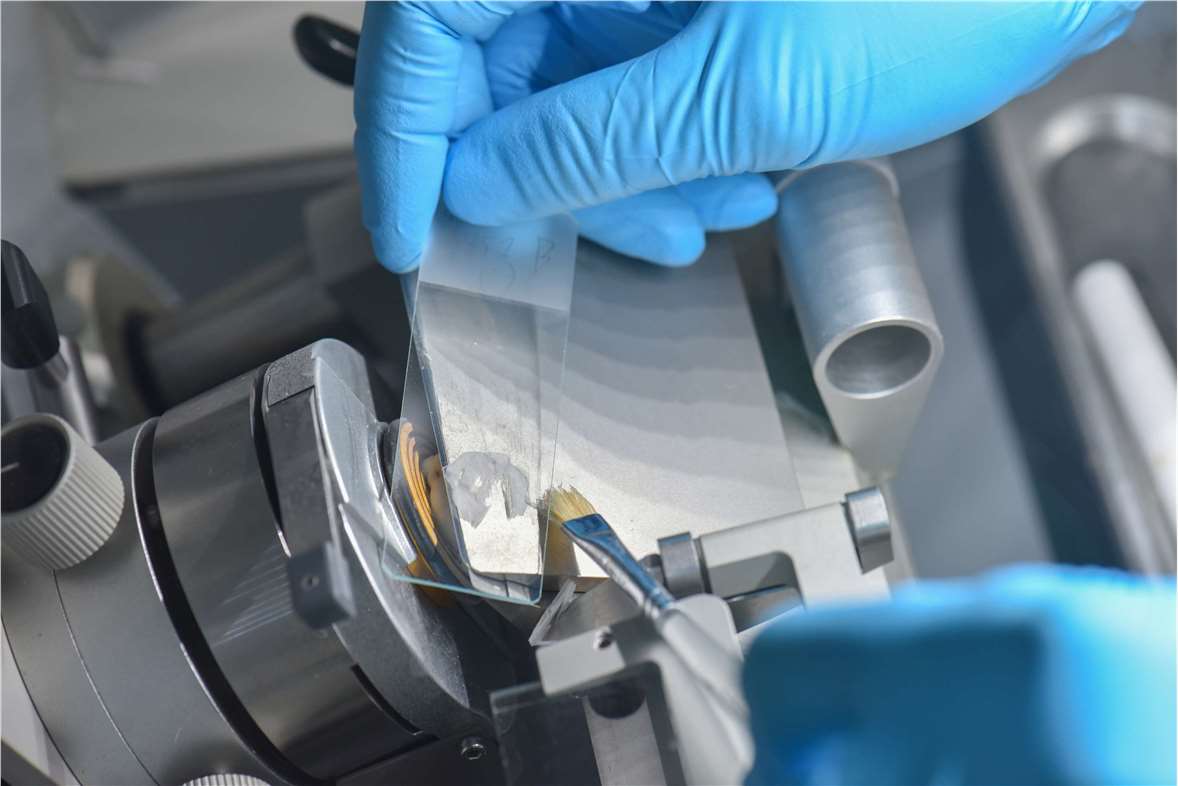Tissue processing and embedding are very critical for the preservation of tissue morphology and the quality of staining. Fresh and/or fixed frozen OCT-embedded tissue is suitable for many spatial analyses, including RNAscope, spatial transcriptomics (fresh only), in situ sequencing, and immunohistochemistry.

The Steps of Frozen Tissue Embedding
Grossing
Smaller size is preferred as it can be frozen faster than a larger one. But when you're preparing fresh tissue for frozen section, the thickness is not as important as paraffin processing tissue, it could be 1 cm or a little bit more.
Fixation (optional)
Tissue can be fixed before or after the grossing. If the tissue has been fixed with formaldehyde, it should be rinsed 3 times with 1×PBS for 10 minutes, transferred into 15% sucrose in 1×PBS at 4°C until the tissue sinks, then transferred into 30% sucrose in 1×PBS at 4°C until the tissue sinks. When perform immunostaining on these tissues, an antigen retrieval procedure may be required to expose the epitopes due to the cross-link effect of the aldehyde fixatives.
Rinse and Dry
Remove excess liquid surrounding the tissue before freezing. Otherwise, these liquids will form ice crystal on the surface of tissue and prevent the tissue from attaching to the frozen embedding media (e. g. OCT compound) when the tissue is frozen embedded and cause a lot of difficulties during sectioning.
Snap-Frozen (optional)
Samples can be snap-frozen on dry-ice or in liquid nitrogen when:
- They are collected over a period of time and cannot be processed simultaneously.
- Too many samples to process at one time.
- Samples are collected in the field, or the mechanical processing of fresh samples is insufficient for thorough disruption.
While freezing allows researchers to postpone DNA/RNA/protein isolation, it is time-consuming and makes subsequent RNA isolation a more laborious process. Ideally, specimens should be snap-frozen or placed into appropriate reagent within 5 minutes from loss of vascularization to prevent the DNA, RNA and protein from degradation and keep the best morphology. It is not recommended to place fresh tissue into cryo-vial first and then snap-freezing the tissue in the vial. It will become very difficult to take the tissue out of the tube later.
Frozen Embedding Unfrozen Tissue in OCT
Label the sample ID on the surface of the cryo-mold, and then place a few drops of OCT (depends on the size of the tissue to be embedded) onto the center of the bottom. An unfrozen tissue sample is placed in the drops and oriented, making sure that the side touching the bottom of the cryo-mold is the side you want to section first. Carefully drop more OCT onto the specimen until it is completely covered. Let it settle for 15-30 seconds to allow OCT to completely wet the surface of the tissue. Finally, the cryo-mold with OCT-covered sample is placed on the surface of the cold isopentane/2- methylbutane for hardening.
Frozen Embedding Frozen Tissue in OCT
Embedding frozen tissue is similar to embedding unfrozen tissue, except that you must freeze down the frozen tissue in OCT as soon as possible whenever two of them touch each other. Otherwise, a bigger portion of the frozen tissue will undergo a freeze-thaw-freeze cycle where ice crystal will form and result in a very poor morphology due to the ice crystal effect.
Storage
Frozen blocks can be temporary stored in dry ice. Transfer the blocks to a liquid nitrogen storage tank (Years) or -80°C freezer (Months).